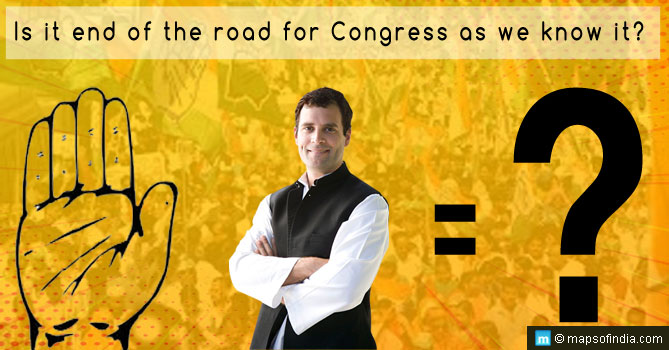The markets in India are going north in the run up to the elections. So what makes the investor community so bullish when reality on the ground is actually quite different? The problem with Sensex is that it is driven by sentiment and the current sentiment is bullish on account of hopes that Narendra Modi is coming to power as the next PM. If that were to happen how will the markets react?
If the NDA comes to power, there are two scenarios. First is the BJP emerges with a strong presence within the NDA while the other is it gets fewer than expected seats but still manages to form the next government by putting together a coalition.
The markets along with the FIIs would love a strong and stable government that is able to implement policies that can spur the economy. If the BJP emerges the clear winner then the immediate reaction of the markets could see the Sensex crossing the 25000 levels and may move even higher towards the 28000 mark before stabilizing to more realistic levels. Already the Sensex is up more than 4% so far and according to Nomura, the MSCI India Index is trading at 14.3 times 12 month forward earnings i.e. around 2% premium to its long term average.
The markets operate more on sentiment than reality. However, even with a clear majority to drive policies, Narendra Modi is going to have to deal with several challenges. The massive Food Security Bill for one.
Another impediment to his policy implementation to spur infrastructure growth is going to be the legacy from UPA, the Land Acquisition Bill. This bill is going to substantially increase the cost of infrastructure projects which in turn is going to pose a hugh challenge for Modi to deliver big ticket projects like the promised Bullet trains. After the initial excitement of the elections, the markets are likely to take stock of reality and settle around more realistic levels.
So what happens if the BJP forms a government but in a weaker position? The markets are dreading this situation. How will Modi deal with a coalition with divergent interests and regional priorities on one hand and a hostile UPA led opposition pushing to embarrass the NDA at every given opportunity? In this scenario the BJP will have to constantly be on its toes to remain in power and that is not a very attractive situation that the markets would like.
Most programs require state government acceptance and approvals and given each state’s self-interest the central government is going to have a very tall task.
India Inc has largely welcomed Narendra Modi’s position on developing India as a manufacturing hub, his promise to further focus on renewable energy by replicating the Gujarat model on solar harvesting, push to increase wind power, implementation of water and gas grids and steps to double agricultural output. But will he be able to free Oil, Gas and coal prices?
The industry also remains tentative about his stated resistance to FDI in retail. How Modi manages to get coalition partners on board to implement his national vision at the state level is going to be interesting. The markets do not take too kindly to sluggish policy implementation.
So how are the FIIs viewing India? The FIIs have over $ 200 billion invested in the Indian markets and most are very bullish on India. According to Ayaz Ebrahim, CIO, Amundi, the Indian economy has bottomed out and if the election mandate offers a stable government there will be a positive impact on the equity markets and therefore positive re-rating. Mickey Doshi, CEO, Credit Suisse (India) however feels that there is a gap between market perception and the reality on the ground.
The market capitalization to GDP ratio remains well below the record levels of 2007 but the positive indicators beginning with India containing its Current Account Deficit, the general view continues to remain positive in the mid to long term. The rupee is likely to strengthen further and remain stable thereafter in the Rs 58 to 60 band.
As China continues with a weakening manufacturing industry for the fifth straight month, money is flowing out of traditional favourites like China, Japan, Russia and Korea and into emerging markets like India. Many believe India will emerge as the most attractive investment option through FY15-16.
JP Morgan has recently upgraded the Indian shares rating from ‘marketweight’ to ‘overweight’ and see the Nifty crossing 7600 in the next 12 months.
The BJP is yet to release its 2014 election Manifesto but there is a sentiment that the manifesto will offer progressive policy outline.
So will Narendra Modi become the next PM with a stable government? Take your call.
Related Information
Who will be the next Prime Minister of India




